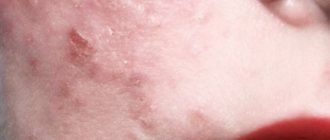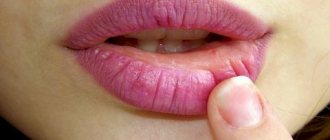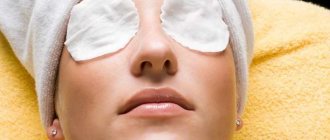An allergic reaction is a pronounced response of the body’s immune system to exposure to a protein substance (allergen). Every year there are more and more patients suffering from various forms of the disease. One of the most common reactions is an allergy to the eyes involving the skin around them2.
The problem significantly worsens a person’s life, so medicine is constantly improving treatment options. Now you can effectively cope with the reaction to the eyes and even prevent its occurrence1.
Causes of an allergic reaction
Allergies on the face around the eyes are directly related to the contact of irritants with the skin and (or) the mucous membrane of the eyeball. An excessive response of the immune system occurs not only when an allergen comes into contact with the skin, but also when the body is exposed systemically. Therefore, there are many reasons for the formation of allergy symptoms in the eye area.
Main factors causing the problem:
- Plant pollen during the flowering period (three periods are distinguished: flowering of trees, bushes and grasses, field grasses);
- Room dust containing fungi;
- Animal fur (allergens can be any pets or wild animals);
- Bird fluff;
- Contact lenses;
- Sunlight (the occurrence of a pseudo-allergic reaction);
- Medicines (local drops, ointments, creams or systemic drugs);
- Household chemicals (depending on the composition, there can be either a true or false allergy);
- Cosmetics (any cosmetics, except special hypoallergenic ones, can cause a response from the body).
Finding out the cause of the problem is a necessary step in successfully eliminating clinical manifestations. The task of a person who suffers from an allergy to the skin around the eyes is to understand the mechanism of its occurrence in order to remove it from his life. In some cases, this is enough for a full life.
Localization of itching
Symptoms and causes can be divided according to their location.
In the eyelid area
The main reason is hyperemia caused by eye irritation upon contact with household chemicals, dust, and pet hair. Itching on the eyelids may occur after eating certain foods, such as chocolate. In this case, the doctor may refer the patient for an allergen test.
Women may experience itching due to low-quality cosmetics that contain prohibited ingredients. When they get on the skin of the eyelids, eyelashes or mucous membranes, they cause irritation and itching.
In the corner of the eyelids
Occurs due to the activity of bacteria or viruses. Redness of the eyes appears, increased lacrimation begins, and a burning sensation in the corner of the eyelid. Main reasons:
- barley;
- allergy;
- microtrauma or foreign body entry;
- exposure to chemicals;
- Using contact lenses for too long.
In rare cases, only the skin in the corner of the eye itches and hurts. This may indicate the development of conjunctivitis. However, most often with this disease, unpleasant sensations immediately affect the entire mucous membrane and eyelids.
Under the eyes
Demodicosis and blepharitis lead to itching in this area. Demodectic mange is caused by a mite living in the eyebrows and eyelashes. Blepharitis is a bacterial infection affecting the edges of the eyelids, which requires long-term painstaking treatment. Severe discomfort occurs with a sebaceous gland cyst.
Swelling may appear under the eyes. In this case, the cause of the itching is an allergic reaction.
Around eyes
The causes are often caused by external factors. Due to the activity of snow or wind, the skin dries out and cracks appear on it.
Itching around the eyes causes allergic dermatitis, which occurs when using low-quality cosmetics or inappropriate medications. Other causes include blepharitis, herpes, or an insect bite.
Allergy symptoms around the eyes
Recognizing an allergic reaction and distinguishing it from other diseases of the visual system is not very difficult. One of the main points is the sudden onset of symptoms and their connection with any irritant. It is not always immediately clear what exactly the allergen is, then you need to evaluate the symptoms.
The following signs indicate an allergic nature of the problem:
- Burning and stinging in the eyes;
- Drying of the mucous membrane;
- Swelling of the eyelids (swelling can be so severe that the eyelids cannot be opened);
- Severe itching (may be in the eyes, nose, ears at the same time);
- Lacrimation (profuse);
- Deterioration of vision (temporary, but can be permanent, depending on the type and duration of the disease);
- Photophobia;
- Redness of the skin around the affected area;
- The appearance of small pinpoint rashes (urticaria).
Clinical manifestations are usually symmetrical. The only exceptions are situations where the local remedy was used only on one eye.
Diagnostics
During the consultation, the doctor examines the patient’s complaints and collects his medical history and conducts a physical examination. He selects diagnostic methods to determine why the eyelids and area around the eyes itch. These include:
- Clinical blood test
- Allergy tests
- Microscopic analysis of eyelashes
- Bacteriological analysis of eyelid scrapings
If the cause of itching lies in a systemic disease, the doctor may prescribe additional diagnostic procedures. They will help you find out why your eyes itch and how to eliminate the risk of recurrence of symptoms.
Types of allergic reaction
Exposure to allergens can cause different types of body responses. Depending on the causes, mechanisms, and manifestations, allergies in the eye area are divided into:
- Vernal keratoconjunctivitis. A chronic seasonal disease that is typical for children and adolescents during the period of hormonal changes in the body.
- Hay fever. Seasonal response of the body to irritation by plant pollen. As a rule, it occurs annually during the flowering period of a certain plant. Any pollen can cause a problem, but most often it is ragweed and birch3.
- Chronic form. In the case of constant exposure to an allergen or a severe reaction, an immune response occurs that worries for weeks, then passes and occurs again.
- Acute reaction. Periodic allergies that occur specifically at the moment of exposure to an allergen. After it disappears, the reaction quickly passes and does not occur until contact occurs again.
Where can I get appropriate advice?
You can find out the characteristics of various medical centers in Moscow and not only choose a competent specialist to visit, but also make an appointment with an ophthalmologist at home, using the information content of our Directory for private clinics “Your Doctor”, which additionally allows you to theoretically familiarize yourself with the pathological disorders of interest.
Publication date: 2018-02-07
Is it possible not to treat an allergic reaction?
Clinical manifestations in the eye area cause significant discomfort. The condition will worsen with continued contact with the allergen. But even stopping exposure to the irritant does not always provide full recovery.
An integrated approach to the treatment of an allergic reaction: avoiding allergens in combination with taking medications gives a chance for a full recovery and a return to a full life. In addition, timely use of medications that relieve the condition allows one to avoid serious complications when allergies turn from local to systemic3.
Symptoms requiring increased attention:
- Swelling of the entire face;
- Difficulty breathing;
- Swelling of the tongue;
- Increased breathing;
- Increased heart rate;
- Blue face;
- Reduced pressure.
Emergency care for suspected angioedema or anaphylactic shock should begin with calling an ambulance1. Eye allergies rarely lead to such complications. The key role here is played by the duration of exposure to the allergen and proper treatment.
How to recognize blepharitis?
There are common symptoms of blepharitis. These include:
- photophobia;
- rapid eye fatigue when reading;
- feeling of heavy eyelids;
- swelling, redness (especially in the morning after waking up);
- thickening and swelling of the ciliary edge of the eyelids;
- feeling of “sand in the eyes”;
- itching;
- eyelash loss;
- the appearance of discharge and gluing of the eyelids;
- the appearance of dry crusts on the ciliary edge of the eyelids.
If one or more of these signs appears, you should contact an ophthalmologist to make an accurate diagnosis and prescribe the most effective treatment.
Treatment of skin allergies around the eyes
The first priority action when signs of allergy occur is to stop contact with the allergen. If symptoms appear for no apparent reason, you should change your position, take a shower, and wash your face. This increases your likelihood of reducing your exposure to the allergen, even if you don't understand what caused the symptoms.
Additionally, antihistamines must be taken, preferably second generation4. These drugs include drugs based on cetirizine, for example, Cetrin. The work of drugs in this group is to block histamine receptors, thereby relieving the clinical manifestations of allergies. The drugs begin to act in 15-20 minutes, so they quickly improve a person’s condition4.
Additional general recommendations:
- Do not rub your eyes, this aggravates the clinical manifestations.
- Use corticosteroid ointments with caution (it is advisable to consult with specialists before using this).
- Choose your antihistamine carefully.
- During treatment, avoid cosmetics, creams and any chemical products for your facial skin.
- If you are allergic to animals or pollen, do wet cleaning more often, wash clothes after returning from the street or contact with an animal.
The rate of disappearance of symptoms is influenced by: the amount and duration of exposure to the allergen, the body’s reactivity, and the use of an antihistamine.
Why do my eyes turn red?
Red eyes usually mean redness of the sclera, the white membrane of the eye. The sclera contains a significant number of capillaries - the smallest blood vessels. Usually they are invisible, but under the influence of a number of circumstances, the blood vessels of the sclera can expand, the walls of the vessels stretch as they expand, and then we see them, or rather, we see the blood filling the vessels. The blood is red, causing the eyes to appear red.
In most cases, dilation of scleral vessels is caused by a sharp increase in blood circulation. This is how the body responds to a fairly wide range of problems. Blood is an internal transport through which nutrients are delivered and toxins are removed. Blood flow helps increase local immune defense and accelerates healing. In many cases, the redness of the eyes goes away quite quickly; this means that the blood supply to the sclera has returned to normal. If the redness persists for a long time, then, obviously, the problem that caused it is quite serious.
Prevention measures
Allergies to the skin under the eyes can only be prevented if you already know what exactly causes them. In such a situation, you can take an antihistamine in advance so that the symptoms are weaker or do not appear at all4.
To enjoy a full life, it is not recommended to ignore the presence of allergies. Timely administration of the drug will help to cope with the problem.
Bibliography:
- Egorov A.E. Treatment of allergic diseases of the anterior segment of the eye / A.E. Egorov // Russian Medical Journal. – 2000. – T. 1. – Issue. 2. – pp. 52–55.
- Kurbacheva O. M. Pollinosis. Modern aspects of diagnosis and treatment of allergic diseases. Mater. conf. - M. - 2009. - P. 31 – 37.
- Maichuk Yu. F. Seasonal hay fever is the most common form of ocular allergosis. Part I. Epidemiology, etiology, pathophysiology, clinical picture, diagnosis. Ross. ophthalmol. magazine. — 2010. — No. 1. — P. 37 – 41.
- Tataurshchikova N.S. Modern aspects of the use of antihistamines in the practice of a general practitioner. // Pharmateka. 2011. No. 11. pp. 46–50.
Folk remedies
In the fight for beauty, all means are good. In addition, there are a number of products that can improve the condition of the skin that are always at hand. One way that always works is masks. They make them from literally everything.
1. Potatoes. For masks, it is rubbed on a fine grater and the resulting paste is applied to the eye area using cotton swabs for 2 or 3 minutes. The healing properties of potatoes have not yet been fully studied, but the fact that it has a beneficial effect on the skin is undeniable. 2. Dill seeds. For the mask, these seeds are poured into a small fabric bag and placed in fairly hot water. Take out the bag after a few minutes, squeeze it out and apply it to your eyes for 5 minutes. 3. Herbs. Decoctions of cornflower and string are considered especially effective.
Special exercises
There are several exercises that will help you cope with mild redness caused by demodicosis, sun rays, staying in a solarium, infectious pathologies, gastrointestinal diseases or allergies. The effect is achieved through the work of facial muscles and normalization of blood circulation. The following exercises will be the most effective:
- Strong squinting of the eyes followed by widening. Repeat five times.
- Frequent blinking for 10 seconds with a break of 5 seconds. Perform 10 approaches.
- Opening your mouth wide for two seconds followed by closing it for the same amount of time. Do five approaches.
- Curl your lips into a tube and pull them forward for 5 seconds. Perform three to five approaches.
Using exercises is useful for both adults and children.
What to do if your eyes are red
First of all, you should eliminate the cause that caused the redness of the eyes.
If redness of the eyes is a consequence of overwork, you need to give your eyes a rest. Sleep helps eliminate redness: after all, when we sleep, our eyes rest. A full eight-hour sleep will in many cases help eliminate redness of the eyes.
In the modern world, many types of activities involve working at a computer. Your eyes get very tired if you have to look at the screen all the time. It is necessary to avert your eyes to the side, blink on purpose, and even better, give your eyes a rest by closing them for a couple of minutes from time to time.
Perhaps the redness of the eyes is an allergic reaction. It is necessary to remove anything that can cause allergies. If you start using new cosmetics, put them aside. Use only natural hygiene products. Avoid contact with pets.
If the redness of the eyes does not go away, you should consult a doctor.











